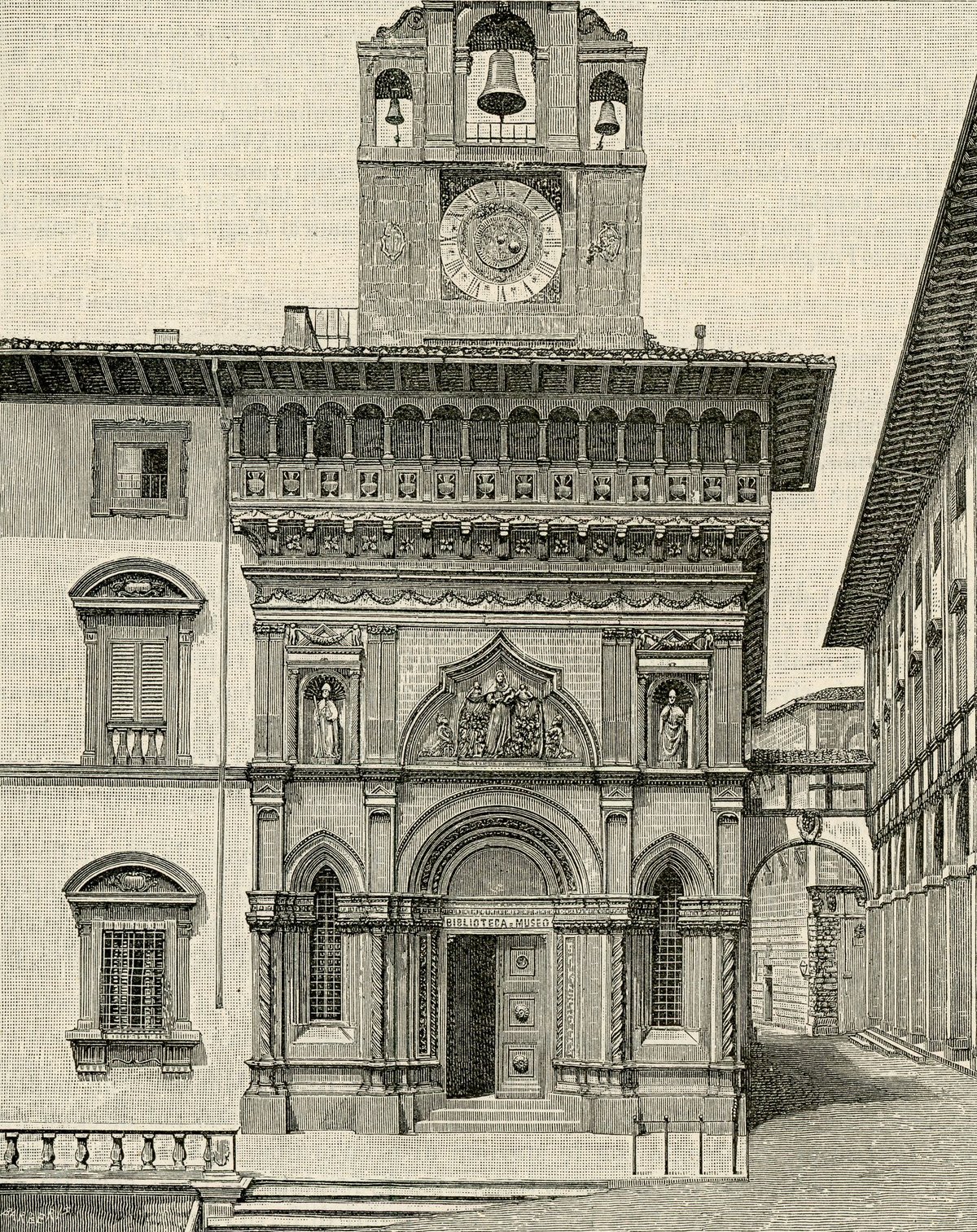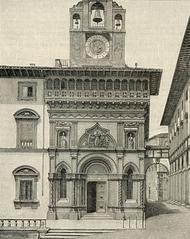
Complete Guide to Visiting Osteria Mest in Arezzo, Italy
Publication Date: 01/08/2024
Introduction to Osteria Mest
When exploring the historic and culturally rich city of Arezzo, Italy, one cannot miss the opportunity to visit Osteria Mest, a quintessential representation of traditional Italian dining. Nestled in a city known for its ancient Etruscan roots and Roman prominence, Osteria Mest offers a unique blend of history, culture, and culinary excellence. The concept of an osteria dates back centuries, originating as simple, communal spaces where locals gathered to share food and wine. Over time, these establishments evolved into dining venues that emphasize local, seasonal produce and a sense of community (Orderific). Arezzo itself is a city steeped in history, from its Etruscan origins to its significance in Roman times, particularly noted for its cultural contributions like the production of Arretine pottery (Italy This Way). In this context, Osteria Mest stands as a microcosm of Italian tradition, offering visitors not just a meal, but an immersive cultural experience that reflects the rich heritage and social fabric of Tuscany. This guide delves into the history and significance of Osteria Mest, provides practical visitor tips, and explores nearby attractions that enhance the overall experience of visiting this remarkable osteria.
Table of Contents
- [History and Significance of Osteria Mest](#history-and-significance-of-osteria-mesthistory-and-significance-of-osteria-mest)
- [Historical Roots of Osteria Mest](#historical-roots-of-osteria-mesthistorical-roots-of-osteria-mest)
- [Evolution Through the Ages](#evolution-through-the-agesevolution-through-the-ages)
- [Cultural Significance](#cultural-significancecultural-significance)
- [Visitor Tips for Osteria Mest](#visitor-tips-for-osteria-mestvisitor-tips-for-osteria-mest)
- [Timing Your Visit](#timing-your-visittiming-your-visit)
- [Menu Highlights](#menu-highlightsmenu-highlights)
- [Wine Pairings](#wine-pairingswine-pairings)
- [Cultural Immersion](#cultural-immersioncultural-immersion)
- [Nearby Attractions and Additional Tips](#nearby-attractions-and-additional-tipsnearby-attractions-and-additional-tips)
- [FAQ](#faqfaq)
- [The Role of Osteria Mest in Modern Arezzo](#the-role-of-osteria-mest-in-modern-arezzothe-role-of-osteria-mest-in-modern-arezzo)
- [Conclusion](#conclusionconclusion)
History and Significance of Osteria Mest
Historical Roots of Osteria Mest
Osteria Mest, like many traditional Italian osterias, has its roots deeply embedded in Italy’s historical and cultural fabric. The concept of an osteria dates back to ancient times when these establishments served as communal gathering places for locals. Historically, osterias were simple, rustic venues where people could enjoy local wine and bring their own food. Over time, they evolved into places where food was also served, but the emphasis remained on community and conviviality (Orderific).
In the context of Arezzo, a city with a rich history dating back to Etruscan times, osterias like Mest have played a significant role in the social life of the community. Arezzo itself was a prominent city in Roman times, known for its strategic location and cultural contributions, such as the production of Arretine pottery (Italy This Way). The tradition of communal dining in osterias aligns with the city’s historical emphasis on social and cultural gatherings.
Evolution Through the Ages
The evolution of osterias from simple wine bars to full-fledged dining establishments reflects broader changes in Italian society. In the past, osterias were humble places where locals gathered to share news, conduct business, and enjoy each other’s company over food and wine (Orderific). This tradition of communal dining has persisted, even as osterias have adapted to modern tastes and expectations.
Today, Osteria Mest continues this tradition by offering a menu that changes daily based on the availability of local, seasonal produce. This commitment to freshness and sustainability is a hallmark of traditional osterias, ensuring that patrons enjoy the best of what the region has to offer (Orderific). The emphasis on local ingredients and simple, hearty dishes remains a defining characteristic of the osteria experience.
Cultural Significance
The cultural significance of Osteria Mest extends beyond its role as a dining establishment. It serves as a microcosm of Italian culture, where food acts as a social adhesive, bringing people together and fostering a sense of community. In Arezzo, a city known for its artistic and historical heritage, osterias like Mest contribute to the preservation of local traditions and culinary practices.
Arezzo’s rich cultural landscape includes landmarks such as the Church of San Francesco, home to Piero della Francesca’s famous frescoes, and the monthly antique fair in Piazza Grande (Love From Tuscany). Osteria Mest complements these cultural attractions by offering a space where locals and visitors can experience the authentic flavors of Tuscany in a convivial setting.
Visitor Tips for Osteria Mest
Timing Your Visit
Osteria Mest, like many traditional osterias, may have specific hours of operation, often closing in the afternoon and reopening for dinner. It’s advisable to check the opening hours in advance and make reservations, especially during peak tourist seasons.
Menu Highlights
The menu at Osteria Mest changes daily, reflecting the availability of seasonal ingredients. Visitors can expect to find traditional Tuscan dishes such as ribollita (a hearty vegetable and bread soup), pappardelle al cinghiale (wild boar pasta), and bistecca alla Fiorentina (Florentine steak) (To Tuscany).
Wine Pairings
Tuscany is renowned for its wines, and Osteria Mest offers a selection of local wines that pair perfectly with its menu. Don’t miss the opportunity to try the region’s famous Chianti or a glass of Vin Santo with cantuccini for dessert.
Cultural Immersion
Dining at Osteria Mest is not just about the food; it’s an opportunity to immerse yourself in the local culture. Engage with the staff and fellow diners, and take the time to appreciate the rustic charm and historical ambiance of the osteria.
Nearby Attractions and Additional Tips
Visitors to Osteria Mest can also explore nearby attractions such as the Roman amphitheater, the Cathedral of San Donato, and the Medici Fortress. These sites offer a glimpse into Arezzo’s rich historical heritage, making your visit even more enriching (Nomads Travel Guide).
FAQ
What are the visiting hours of Osteria Mest?
Osteria Mest typically operates with a break in the afternoon. It’s best to check their official website or contact them directly for the most up-to-date hours.
Do I need to make a reservation?
Yes, especially during peak tourist seasons, making a reservation is recommended.
What are the must-try dishes at Osteria Mest?
Must-try dishes include ribollita, pappardelle al cinghiale, and bistecca alla Fiorentina.
The Role of Osteria Mest in Modern Arezzo
In modern Arezzo, Osteria Mest continues to play a vital role in the community. It serves as a gathering place for locals and a destination for tourists seeking an authentic Italian dining experience. The osteria’s commitment to traditional culinary practices and its emphasis on communal dining make it a beloved institution in the city.
Arezzo itself is a city that seamlessly blends its historical heritage with contemporary life. Visitors can explore landmarks such as the Roman amphitheater, the Cathedral of San Donato, and the Medici Fortress, all while enjoying the vibrant cultural scene that includes festivals, markets, and art exhibitions (Nomads Travel Guide). Osteria Mest fits perfectly into this dynamic environment, offering a taste of Tuscany’s rich culinary traditions in a setting that feels both timeless and welcoming.
Conclusion
Osteria Mest in Arezzo is more than just a place to eat; it is a cultural institution that embodies the essence of Italian communal dining. Its historical roots, commitment to local and seasonal ingredients, and role in the community make it a must-visit for anyone exploring the city. Whether you’re a history enthusiast, a food lover, or simply looking to experience the warmth and hospitality of Tuscany, Osteria Mest offers a memorable and authentic dining experience.
Stay Updated
For the latest updates and more travel tips, follow us on social media and check out our mobile app Audiala. Don’t miss out on related posts and upcoming events!
Citations and References
- Orderific, 2023, Orderific
- Italy This Way, 2023, Italy This Way
- Nomads Travel Guide, 2023, Nomads Travel Guide
- Love From Tuscany, 2023, Love From Tuscany
- To Tuscany, 2023, To Tuscany





